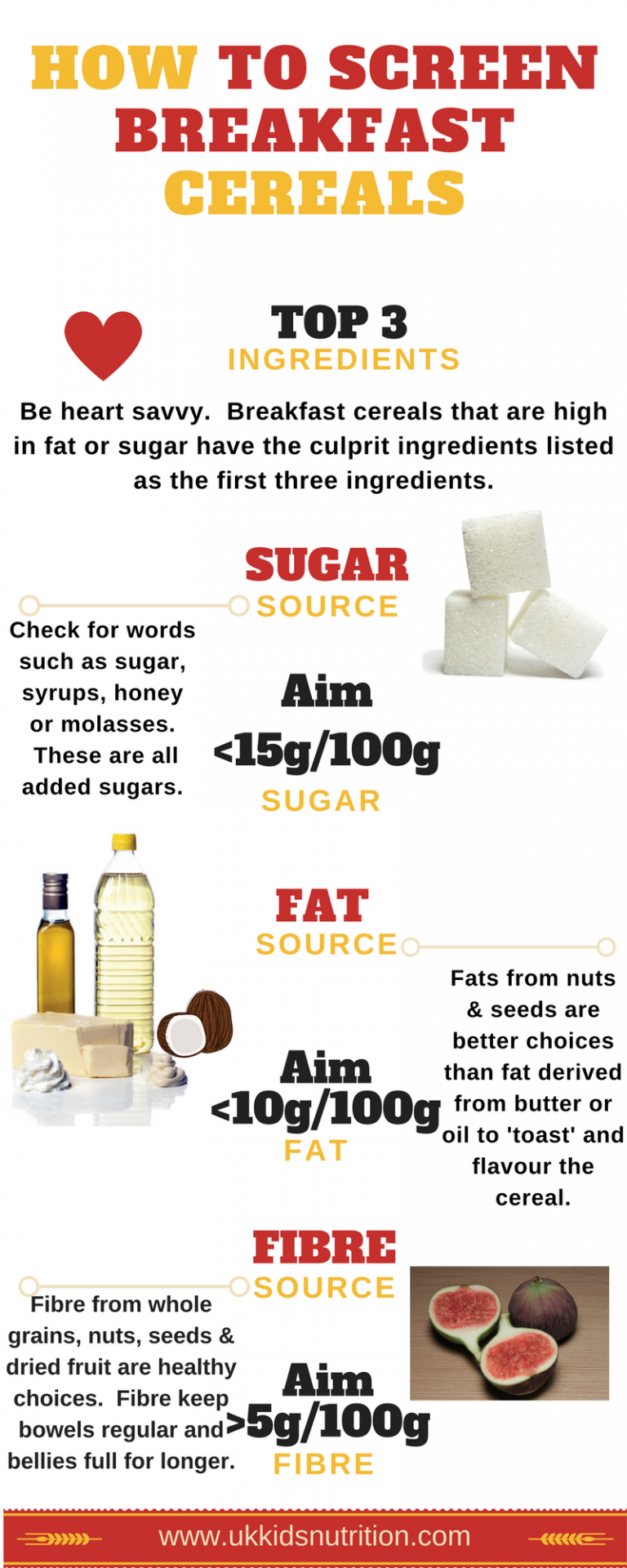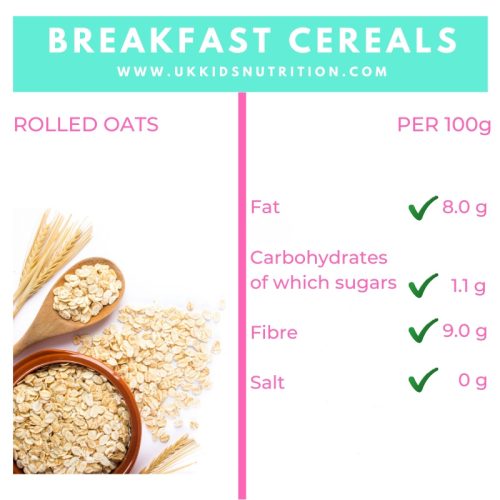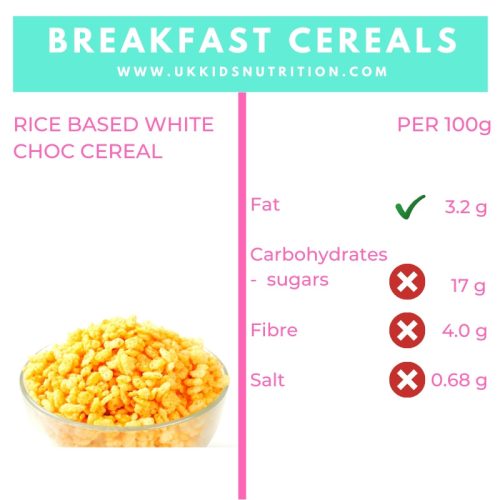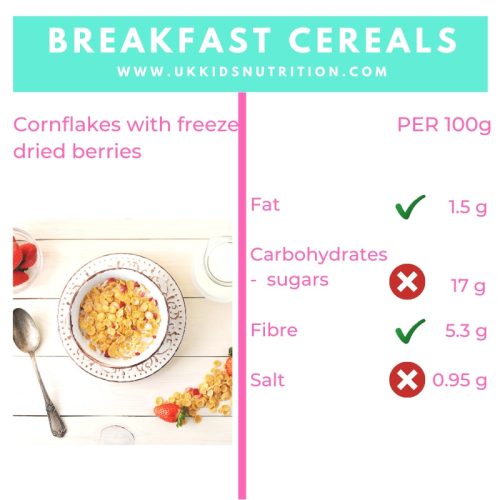Subscribe: Apple Podcast | Email | Spotify | Stitcher

Are you concerned about the amount of added sugar in breakfast cereals? Do you need guidance on how to decode the nutrition labels? Once you apply the golden rules that I am about to go through with you, you will be able to walk into any supermarket and make informed choices after just a glance at the ingredients list.
How To Screen Breakfast Cereals For Hidden Sugar
I can only imagine how confusing screening breakfast cereals for hidden sugar are, if you don’t have this screening tool.
What’s worse, apart from the words fat, carbohydrate, sugar and protein, there’s also fibre and salt to consider.
Where does one even begin to make sense of this information? What’s important? What’s not?
The good news is that you don’t need to be an expert in nutrition to decode the nutrition facts table on breakfast cereals.
All you need is this simple nutrition screening tool that I am about to share with you. Remember this and soon you will appreciate what’s ‘child’ or ‘sugar’ friendly and what’s not.
The beauty of this tool is that it is suitable for the entire family.
Here’s a practice run below.

Ingredients List
You may have noticed that every packaged food item has an ingredients list, but what you may not know is that all ingredients are listed in descending order. This means that heavier ingredients, or the major ingredients used to prepare the breakfast cereals are listed first.
It should come as no surprise to you that high fat or high sugar foods may have vegetable fats, oils or sugar listed as their first three ingredients. This is your clue that a breakfast cereal has hidden sugar and fat.
Screening Tool
Any product that exceeds 10g of fat, 15g of sugar contributing less than 5g fibre per 100g of food is not the ideal daily breakfast choice. If you still don’t know what I am talking about, refer to the back of the packaging of your breakfast cereal. Look closely at the table called nutrition information. Follow the column titled ‘Per 100g’.
Very few breakfast cereals actually meet the golden criteria. Just remember these key numbers above and you are good to go. Here’s a pictorial reminder below for helping you identify hidden sugar in breakfast cereal.

Sources of hidden sugar in breakfast cereals
There are many reasons why breakfast cereals fail in this area. It’s purely down to the added sugars.
Don’t forget that any honey or syrups that are added will contribute to the final total sugar content of the cereal.
If your child’s favourite cereal is low in fat but high in sugar, think about where these sugars are coming from. Is there dried fruit in this cereal? Is fruit listed as one of the top three ingredients or is it sugar, honey and syrups?
Don’t forget that fancy sugars such as maple or coconut are still added sugars and should be eaten in moderation.
Sugar added to cereals are not the same as sugar from dried fruit.
As a rule of thumb, dried fruit contributing to the total sugar content of the cereal is not the same as added refined sugar.
Fruit provides dietary fibre and is also a source of essential vitamins and minerals.
The ingredients list will give you plenty of clues as to whether the breakfast cereal is suitable for your family.
If it starts to get overwhelming, do refer to the government’s colour coding traffic light system. Red usually means that the product is high in that corresponding nutrient, whilst amber means that it’s moderately high. Green is ideal and means that the breakfast cereal is perfect to eat daily.
Note that only breakfast cereals containing less than 5g sugar per 100g are considered to be low in sugar.

Added Vitamins and Minerals
Don’t be swayed by the added vitamins or minerals in some breakfast cereals. Examples include B vitamins, vitamin D and iron.
With the exception of vitamin D and B12, a healthy balanced diet including plenty of fresh fruit and vegetables will ensure that your child meets their daily requirements for all of the vitamins and minerals, through food.
If you are concerned and your child is following a special diet or a plant-based diet, then do book a free consultation with me. I can talk you through how my clinics at Harley Street work.
Remember that all children from 6 months to five years will require daily vitamins A, C and D drops. If your child is drinking formula then you will not need to start the vitamin supplement until you make the switch from formula to cows milk, or is your baby starts to drink less than 500ml of formula per day.
Here’s a video that summarises the main points.
Need more help and support?
Book a free initial consultation and we can discuss how we can work together at my brand new clinic over at Harley Street.
Let Me Help
Would you like to meet a children’s dietitian with over a 12 years of experience at Great Ormond Street? I have successfully helped families solve their nutrition problems from around the world.
Whether you are worried about picky eating, food allergy or need to help your child build a healthy relationship with food, I’ll help you manage these with confidence.
For bookings and enquiries email me on [email protected] or book a free 15 minute call to discuss how I can help you at one of my London clinics.
Subscribe: Apple Podcast | Email | Spotify | Stitcher





5 thoughts on “How To Screen Breakfast Cereals For Hidden Sugar”
Thanks so much for this – great advice.
Great tips Bahee with really useful infographic
Fab… simple to use screening tool… Love the 10/15/5 plan
A great screening tool and simple infographic – thanks!
Such a useful article, especially as many breakfast products appear healthy but in fact are the opposite!